The Park Laurel, 15 West 63rd Street: Review and Ratings
between Central Park West & Broadway View Full Building Profile
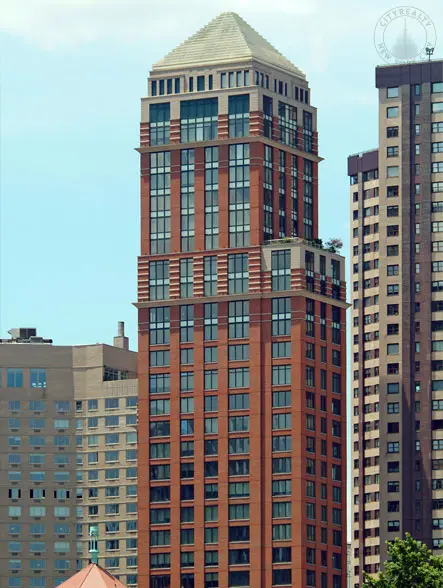

This very handsome, mixed-use, mid-block tower at 15 West 63rd Street, which is also known as the Park Laurel, was built in 2000 and is distinguished by its large, stepped, pyramidal top.
It is highly visible from Central Park as it is located to the east of the massive, angled apartment building at 25 West 63rd Street that is also known as 1 Lincoln Plaza, and that, from a distance, almost seems to wrap around the Park Laurel.
The 41-story Park Laurel has 53 condominium apartments ranging in size from two-to-four bedrooms. The 14th through 40th floors of this tower contain the luxury condominium apartments, most of which have Central Park views.
The building was designed by Beyer Blinder Belle and Costas Kondylis and was a project of Vornado Realty Trust and David Edelstein.
It was built next to and above the landmark West Side YMCA (Young Men's Christian Association) at 5 West 63rd Street. The air-rights development not only added the Park Laurel’s luxury apartments but also expanded and rehabilitated a historic community facility (the YMCA), preserved the façade of the former McBurney School, and created 67 affordable housing units.
Bottom Line
With apartments starting at the 14th floor, the Park Laurel's distinctive and handsome tower offers many stunning vistas of Central Park and is very close to the Lincoln Center for the Performing Arts and the neighborhood’s many attractive restaurants.
Description
The Park Laurel rises over the former McBurney School and preserves its landmark, 5-story, Romanesque-style façade that is incorporated into the new building that cantilevers over part of the westerly portion of the adjacent 14-story Y.M.C.A. at 5 West 63d Street.
The tower has white detailing and three setbacks, each with cornices a floor or two beneath the setbacks. The light red brick of the tower was chosen to harmonize with the South Carolina pastel brick of the Y.M.C.A building.
The building is very close to the Lincoln Center for the Performing Arts and this neighborhood has excellent shopping, many restaurants and good public transportation.
Amenities
The building, which is pet friendly, has 24-hour concierge service, a doorman, a health club and gym, a children's playroom, and a ground-floor bicycle/carriage room.
Apartments
Many apartments have stunning views to the east of Central Park and there are some terraces.
The appointments and finishes in the residences are sumptuous.
Sparkling white kitchens come with Cafe Ochre granite slab countertops and top-of-the-line appliances, such as SubZero refrigerators and Miele dishwashers. Thermador double wall ovens and Thermador five-burner cooktops provide sophisticated cooking space for entertaining.
For example, master baths feature Calacatta Gold marble slab floors, double-sink vanities with Calacatta Gold slab tops, polished-nickel fittings, six-foot cast-iron tubs with marble surrounds and separate over-sized marble stalls.
The centerpiece of the powder rooms is Urban Archeology's polished black-and-gold St. Laurent marble, glass-legged vanity with brass feet.
A four-bedroom apartment has a 16-foot gallery that leads to a 24-foot living room that opens onto a 13-foot dining room, both overlooking Central Park.
A three-bedroom unit has an entrance foyer that leads to a gallery that leads to a 22-foot living room that opens onto a large terrace and a 17-foot dining room. An enclosed kitchen leads to a 12-foot maid’s room while a long hall off the gallery leads to three bedrooms.
A duplex on the 29th and 30th floors has 7,738 square feet of interior space and 1,244 square feet of exterior space. The lower level has an entrance foyer that opens onto a 29-foot gallery that leads to a 37-foot living room, a 14-foot library, 22-foot dining room and a 19-foot family room, all with Central Park Views. The lower level also has a 17-foot kitchen and a 15-foot breakfast room. The upper level has three bedrooms, an office and a playroom, all with views of Central Park, as well as two more bedrooms and staff quarters.
History
Built above the western end of Dwight James Baum's West Side Branch of the Y.M.C.A. (1930), the Park Laurel building had been in the works for fifteen years before construction began.
In 1986, when plans for the project were first announced, it was fiercely opposed by neighborhood residents and preservationists, who argued that Baum’s artfully massed building, which was not a landmark, would be overwhelmed by the proposed apartment tower.
"The real estate collapse temporarily shelved the project, and although it was similarly opposed when it spring to life again a decade later in 1997, the opposition was less intense," according to Robert A. M. Stern, David Fishman, and Jacob Tilove, the authors of “New York 2000, Architecture and Urbanism between the Bicentennial and the Millennium” (2006).
In 1997, with Manhattan's housing market robust, the Y.M.C.A. resurrected its plan to develop the site and after 18 months of negotiations sold the air rights to Vornado Realty Trust and David Edelstein. The Y.M.C.A. received $9.3 million in cash and ownership of the 13 lower stories of the new building, valued at $10 million. The Y. M. C. A. uses those floors for its programs and for 65 rentals for low- and moderate-income tenants. The cash proceeds were used to improve the existing Y.M.C.A. building.
The project was Vornado's first foray into Manhattan's luxury residential market. It would subsequently develop One Beacon Court on the former site of Alexander’s on Lexington Avenue between 58th and 59th Streets.
Despite its mid-block location, the new tower is an imposing presence on Central Park West, unobscured by the low buildings of the New York Society for Ethical Culture, which face the park on the same block.
Paul L. Kendall, vice president of the Y.M.C.A. of Greater New York, said the tower would improve conditions at the West Side branch - particularly for women, children and the disabled - and would provide money for needy branches throughout the five boroughs.
The tower's size was based on the city's "inclusionary housing'' zoning procedure that rewards developers who build or preserve low-income dwellings by allowing them to add in a high-rise luxury development up to 20 percent more space than zoning rules would ordinarily permit. To earn the bonus, the Y.M.C.A. planned to build 40 rooming units in the tower and retain 25 apartments for lower-income tenants in two tenement buildings it owns at 14 and 16 West 64th Street.
Sales began in May, 1999 even as a legal challenge that swirled around the project continued, according to a May 21, 1999 article by Rachelle Garbarine in The New York Times. "Three community groups that oppose the project - they contend that it will make a dense neighborhood denser - are appealing a March ruling by the State Supreme Court in favor of the development. Though the court granted a temporary stay to stop construction, it was ultimately lifted," the article said, noting that the groups were the West 64th Street Block Association, the One Lincoln Plaza condominium association and Landmark West, a preservation group.
Their lawsuit contended that the approval for the project, which was issued in 1989 and lacked an expiration date, should be invalidated because the city began putting four-year limits on such permits in 1995, the article said, adding that "it also said the project's environmental impact statement should be updated because buildings constructed in the intervening decade have made the neighborhood more congested," said Charles E. Knapp, a Manhattan lawyer representing the groups.
"Though the court agreed with our analysis that the lapse provision applied to the permit, it inconsistently allowed the city not to apply the law here," he said. "We are not anti-development, but we are concerned in trying to maintain a livable neighborhood."
Among those opposed to the project, according to an article by Amy Higgins in the June 15, 1998 edition of The Observer, was Madonna and Gail Gregg, the wife of Arthur Ochs Sulzberger Jr., publisher of The New York Times. The article said that they argued that the project was "a serious threat to their quality of life."
Nina Gray, an architectural historian, had a big problem with the tower on artistic grounds (she described the project as "stuffing a skyscraper into an airshaft"), but also as a parent of 6-year-old Alexander, then a kindergartner at Ethical Culture, and 4-year-old Julia, who attended the Y preschool.
David Edelstein has developed other major condominium towers in New York, including 279 Central Park West, the Rockefeller University housing complex on 81st Street, and the 40-story Channel Club on East 86th Street.
"We opportunistically came in and took over a project that was waylaid by the real estate recession of the late 1980's because we think it is the single best site in Manhattan," Steve Roth, Vornado's chairman, told The Times. "The Park Laurel has the best location and best park views of any site in Manhattan," said Steven Roth, chairman and CEO of Vornado.
The McBurney School, now independent of the Y.M.C.A., moved to West End Avenue and 60th Street.
The Y.M.C.A. building has extensive physical fitness facilities and a hostel and was designed in Lombardy style with Romanesque and Gothic detailing by Dwight James Baum.
In 1923, Baum had been the youngest architect to receive the gold medal of the Architectural League of New York and he would design more than 100 homes in Riverdale including one in 1930 for Anthony Campagna, the famous real estate developer.
In his June 16, 2002 "Streetscape" column in The New York Times, Christopher Gray noted that Baum’s tapestry brickwork on the Y was "like a castellated Italian hill town, with towers, battlements and balconies rising in irregular symphony, culminating in a huge, central tower with an octagonal roof." Next door he designed a trade school for the Y called the McBurney School with a façade that had a "representation of a drafting table and an automobile repair shop."


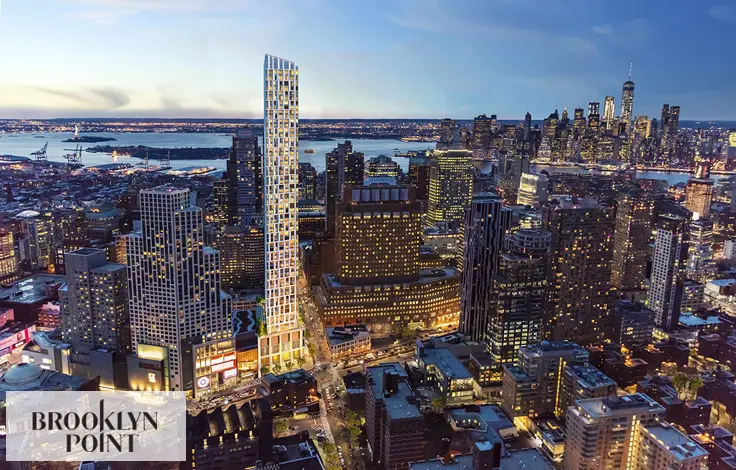

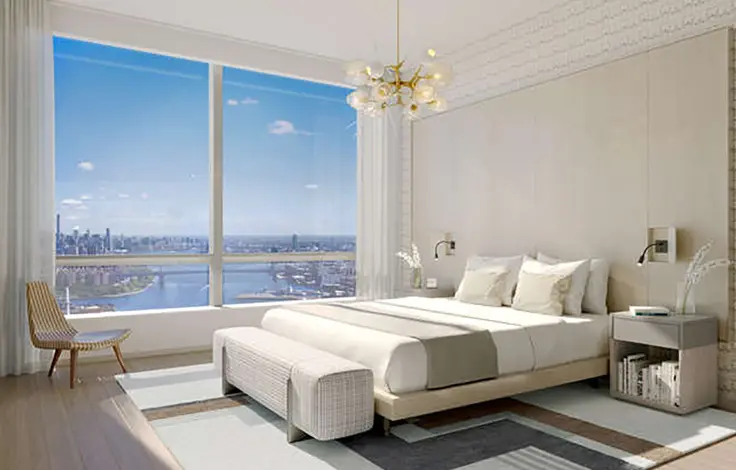
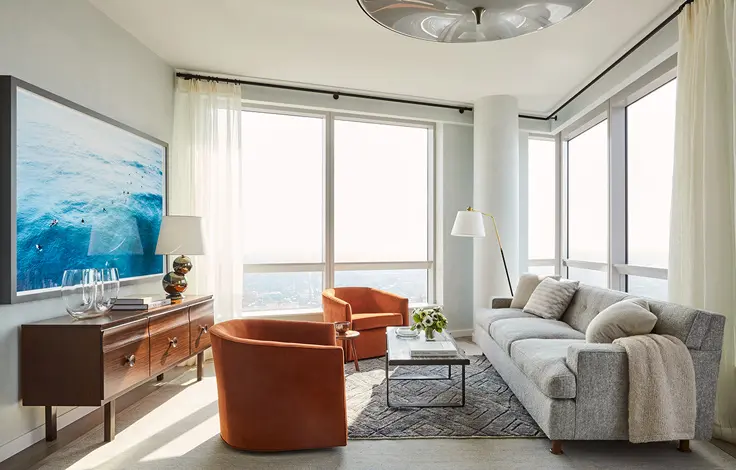
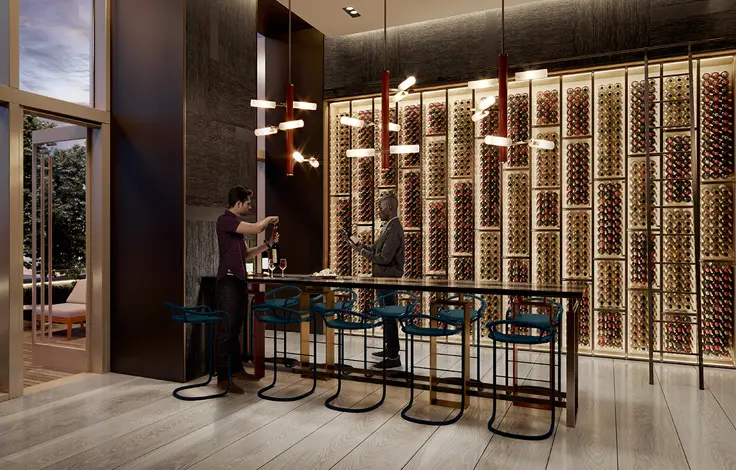
 6sqft delivers the latest on real estate, architecture, and design, straight from New York City.
6sqft delivers the latest on real estate, architecture, and design, straight from New York City.
